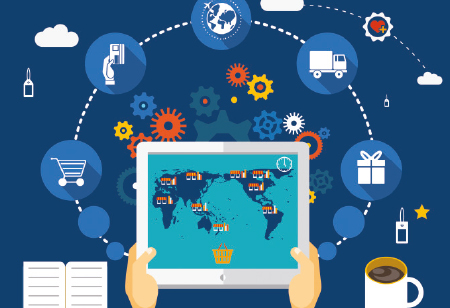
An adept logistics & supply chain strategy specialist, Jitender has over 15 years of experience in planning and execution of pragmatic strategies in digital transformation for multi-scaled organizations.
Freight management refers to the technology, experience, human resources, and knowledge utilized to facilitate effective, efficient and expeditious coordination between carriers & shippers and ensure goods are delivered on budget, and on time. Supply chain stakeholders have a common pressing need to automate the distribution processes, and thereby reduce direct as well as indirect costs, improve operational efficiency, reduce the nuances in tracking and confirming consignments, increase the percentage in adherence of SLAs, reducing the loss in sale for non-availability of material.
Freight management system works closely on principles of Supply Chain 4.0 and has tremendous potential in automating the distribution in Supply Chain. It breaks the traditional ways in which distribution is currently done. Use of freight management system will bring-in visibility in distribution process, mitigate risks, and reallocate the existing manual freight bills checking resources to various other core tasks. This set of innovative digital technology that it offers could help companies reduce lost sales by 50-65 percent and cut distribution costs by 15-30 percent. Improved planning would make inventory reductions of 35- 75 percent possible and supply chain administrative costs could be 80-120 percent lower. The levers, which need to be identifying for realizing this potential are clear, but to what extent can they already be put into use today?
Collaborative Platform
To deliver a unified application and to manage all type of distributions - Primary, Secondary or Last mile, bringing all stakeholders - internal or external - including legacy application users on a unified platform for creating a Logistics Command and Control Centre, i.e., LC3. LC3 is Logistics Control and Command Centre that gives final punch, which can help unleash the power to control and optimise the supply chain. LC3 gives the control to Logistic Service Users (LSUs) in identifying and instructing the vehicle type that must be used, the route that Logistic Service Providers (LSPs) must follow, SLA’s that LSP is not adhering, truck fill rate that must be achieved before starting the trip.
LC3 Capabilities:
1. End-to-End Visibility: Visibility across supply chain partners, including suppliers, contract manufacturers, transportation carriers, third-party logistics, distributors and dealers.
2. Real-Time Tracking: Through collaborative information sharing the information can be shared and collaborated in real-time.
3. Early warning Alerts & Exception Management: Resolves supply chain disruptions before they disrupt the business.
4. Predictive & Prescriptive Decision-Support: Using predictive & prescriptive analytics in deciding FTL or express will be economical, wherein cost savings are guaranteed. In comparing and finalising the most economical or fastest LSP. In deciding a smart route after considering all practical constraints across all supply chain partners. In optimising the vehicle space by maximising the truck fill rate - maximising volume/weight per vehicle, deliver more in same cost. Prescribing the right mix of items that needs to be picked for maximising the Truck Fill Rate.
5. Autonomous Decision-Making & Control: Take the robot out of the human and boost productivity.
6. Cognitive: The self-correcting supply chain with decision-making and Machine Learning.
Advantages Of LC3:
1. Order Fulfilment: Easy to configure, flexible, secure and reliable order data integration - reducing cost to serve. LC3 helps consolidate orders across various divisions reaching same destination earlier executed on parcel mode can now be shipped FTL giving cost advantage to the tune up to 50 percent considering at what level your existing operation is.
2. Transport Management: Planned & optimized shipments and streamlined communication between all parties, Secondary or last mile distribution by consolidating multiple upcountry orders can be sent in FTL and can be tracked. Truckload building can give an additional savings up to 25 percent. The underutilised space in vehicles either due to weight or volume is bound to be questioned as it’s now visible to middle a top management.
3. Smart Route Management: Smart routes can be planned considering multiple constraints - location of distributors - opening/closing times, manpower availability for loading/unloading, vehicle type constraints, and vehicle timing constraints and on holidays.
4. Low Cost Inventory Management: Reduction in shortages/stock-outs & improved warehouse and transport inventory. POS data can be integrated with RDC and Plant for replenishment orders.
5. Visibility & Monitoring: Real-time, fully supply chain transparency for improved service levels and traceability. SLA’s for truck indent to gate in, truck type indented to actual received, vehicle turnaround time at source. Long haul TAT, SLA’s for loading and unloading services can now be can be enforced with reward or penalty on LSP - resulting 100 percent customer satisfaction and decrease in loss of sale for non-availability - increase in sale and productivity up to 20 percent.
The demands of business and the advancements in technology provide both the need for, and the ability to deliver, a Digital Supply Chain. To make that end-to-end Supply Chain work real Control Tower applications are required
We use cookies to ensure you get the best experience on our website. Read more...